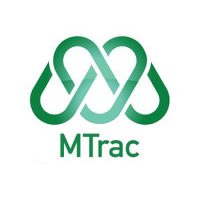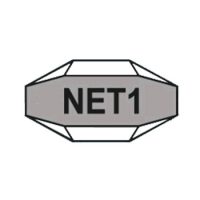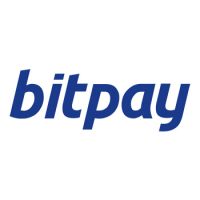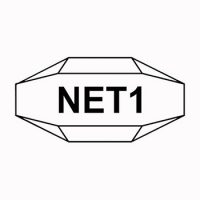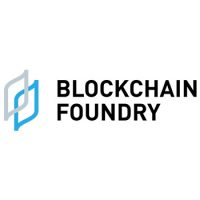Blockchain
10PROPS INTRODUCES “DOUBLE-PROTECTION” NFT’S, VOWS TO CURB THEFT AND PLAGIARISM IN THE MARKET

10props, an Ethereum-based NFT marketplace, announces a new technology, which according to the company will stem the rampant tide of theft and plagiarism threatening the entire nascent market.
10props offer what they call “double-protection” NFT’s. The first layer of protection is a market standard – the non-fungible token itself. The novel technology is the second layer of protection that 10props hope will be eventually adapted by the entire NFT market as an added security against a wide spreading wave of scams.
“We must stop thinking about buying and selling NFT as merely a transaction with a token. Let’s face it, every NFT transaction includes two digital assets, not one. Yes, there is a token packed in a smart contract and wonderfully protected in blockchain. But there is also a digital file that smart contract is pointing to, and the truth is simple: it’s not protected at all. Anyone can copy-paste it, steal it, mint an NFT from it, and sell it again. The token itself is such a new thing for most of us that we somehow disregard the importance of the second asset, the digital file itself, which is in fact an inseparable part of the commodity that people pay lots of money for,” says Robert Nguyen, 10props founder and CEO.
Every artist uploading a digital image to 10props certifies that the file is “unique,” i.e. not available elsewhere on Internet. Moreover, the seller also confirms to the company that the image itself, as well as all its source files and derivatives had been deleted from the artist’s devices prior to uploading. The company is using a dedicated crawler to parse the web for duplicates, and in case a leak is identified the artwork is removed from the auction qualifying round. The seller of a compromised image receives a warning, which is followed by a lifetime ban should the situation repeat itself.
“We call it ‘verifiable honesty.’ There are honest artists who will not try and sell the images twice, even if they had risked keeping them. But there will be attempts to cheat the system, such is human nature. The new rules will settle, but it will take time,” says Robert Nguyen. All digital artworks sold at the 10props auctions are discreetly modified with the use of a sophisticated technology provided by a French expert IMATAG, making them undetectably different from the files uploaded by the sellers. The resulting ‘digital originals’ will be either stored on the decentralized storages or kept privately as exclusive rarities by those buyers who wish to be the sole proprietors of a unique authentic file. Depending on buyer’s choice an ERC-721 standard smart contract will point to either a decentralized storage location, or the personal gallery protected by a buyer’s own password.
By securing the artwork file with an invisible watermark provided under a special arrangement with IMATAG, 10props gives the NFT buyers a choice: either make the digital image to which the smart contract is pointing to available to and freely downloadable by anyone – which is the market status quo at the moment – or keep it in a buyer’s own “vault” thus assigning scarcity and uniqueness to the file which cannot be copy-pasted by anyone in the public domain.
Blockchain
Halving weakness sees $206 million exit crypto funds, Bitcoin miners pivot to AI

Leading up to Friday’s Bitcoin (BTC) halving, investors opted to remain on the sidelines rather than increase their exposure to cryptocurrencies. CoinShares’ latest report on digital asset fund flows reveals that crypto funds experienced $206 million in outflows last week, while trading volumes for Exchange-Traded Products (ETPs) dropped to $18 billion.
James Butterfill, head of research at CoinShares, noted, “These volumes represent a lower percentage of total Bitcoin volumes (which continue to rise) at 28%, compared to 55% a month ago.” He attributed this decline in investor appetite to expectations that the Federal Reserve would maintain interest rates at elevated levels for a longer duration.
In terms of regional flows, the United States led the outflows with $244 million exiting incumbent ETFs by the week ending April 19. Butterfill highlighted that newly issued ETFs still received inflows, albeit at lower levels compared to previous weeks. Germany and Sweden saw outflows of $8.3 million and $6.7 million, respectively, while Canada experienced inflows of $29.9 million. Switzerland, Brazil, and Australia also witnessed inflows of $7.8 million, $5.5 million, and $2.2 million, respectively.
Butterfill observed that although Bitcoin saw outflows of $192 million, there were minimal flows into short-Bitcoin positions. Ethereum (ETH) experienced outflows of $34 million for the sixth consecutive week. However, multi-asset funds saw improved sentiment, attracting $8.6 million in inflows. Additionally, Litecoin (LTC) and Chainlink (LINK) received inflows of $3.2 million and $1.7 million, respectively.
The report highlighted that blockchain equities sustained their 11th consecutive week of outflows, totaling $9 million, as investors remained concerned about the halving’s impact on mining companies.
In a separate analysis of the post-halving crypto mining industry, CoinShares analysts suggested that many miners might transition to serving the artificial intelligence (AI) sector, which has become more lucrative. They anticipated a shift towards AI in energy-secure locations, potentially leading to Bitcoin mining operations relocating to stranded energy sites.
The analysts projected a 10% decline in the Bitcoin network’s hash rate after the halving as miners deactivate unprofitable ASICs. However, they expected the hash rate to reach 700 exahash (EH/s) by 2025. As of the current data, the Bitcoin hash rate stands at 596.22 EH/s.
The report also noted that substantial cost increases are anticipated due to the halving, with electricity and production costs nearly doubling. Mitigation strategies include optimizing energy costs, enhancing mining efficiency, and securing favorable hardware procurement terms. Miners are actively managing financial liabilities, with some utilizing excess cash to significantly reduce debt.
Source: kitco.com
The post Halving weakness sees $206 million exit crypto funds, Bitcoin miners pivot to AI appeared first on HIPTHER Alerts.
Blockchain
NYSE gauges interest in 24/7 stock trading like crypto

According to reports, the New York Stock Exchange (NYSE) is exploring the possibility of introducing round-the-clock trading, a model akin to that of cryptocurrency markets. In a bid to gauge market sentiment, NYSE’s data analytics team has circulated a survey among market participants. The survey seeks feedback on whether there is support for 24/7 or extended weekday trading hours and, if so, what measures should be implemented to safeguard traders against overnight price fluctuations. As of now, NYSE, alongside Nasdaq and the Chicago Board Options Exchange, operates from Monday to Friday, spanning from 9:30 am to 4:00 pm Eastern Time.
In the United States, assets like cryptocurrencies, United States Treasurys, foreign exchange, and major stock index futures are already tradable 24/7. Certain brokerages, such as Robinhood and Interactive Brokers, provide access to U.S. stocks throughout the week via a “dark pool” trading venue, catering to international retail investors during their local trading hours.
However, recent reports indicated that Robinhood suspended its 24-hour trading services amidst heightened tensions between Israel and Iran, prompting concerns among investors regarding the sustainability of continuous trading.
Effectively managing liquidity in a 24/7 trading environment has proven challenging for trading platforms within the cryptocurrency industry.
According to cryptocurrency research firm Kaiko, there’s often a mismatch between the operating hours of traditional financial institutions and the needs of major crypto traders and market makers. Traders frequently find themselves losing sleep during periods of extreme market volatility.
While the results of NYSE’s survey haven’t been revealed, Tom Hearden, a senior trader at Skylands Capital, conducted his own poll among his 19,300 followers, asking if they would support NYSE transitioning to 24/7 trading hours. Interestingly, over 70% of the 1,459 respondents voted “No.”
NYSE’s survey coincides with the efforts of startup firm 24X National Exchange, which is seeking approval from the Securities and Exchange Commission (SEC) to launch the first exchange in the country operating round-the-clock.
The FT said, citing two persons familiar with the subject, that the SEC has “months” to study the proposed rule change, and other relevant issues, such who should shoulder expenses and the function of clearing houses, are already being considered by other stakeholders.
“How loud they will be playing in the middle of the night is unknown to me. However, the decision of whether something is commercially feasible or not actually shouldn’t be made by the SEC, James Angel, a Georgetown University finance professor, told FT.
“I support letting the market make the decision. We’re all better off if it succeeds, and the exchange’s stockholders lose out if it fails.
After the company withdrew an application in March 2023, alleging operational and technological concerns, it is the second attempt to receive SEC clearance.
Source: cointelegraph.com
The post NYSE gauges interest in 24/7 stock trading like crypto appeared first on HIPTHER Alerts.
Blockchain
Online Banking Market to Grow at CAGR of 14.20% through 2033, Key Takeaways of Digital Banking, Banking Ecosystem, Financial Giants & Disruptive Startups
-

 Blockchain5 days ago
Blockchain5 days agoPhoenix Group Engages BHM Capital as Liquidity Provider to Boost ADX Liquidity and Enhance Market Dynamics
-

 Blockchain5 days ago
Blockchain5 days agoQuantum eMotion Files a Patent for Quantum-based Blockchain Wallet Under the Patent Cooperation Treaty (PCT)
-

 Blockchain Press Releases5 days ago
Blockchain Press Releases5 days agoCanaan Shines at Blockchain Life 2024 in Dubai
-

 Blockchain Press Releases5 days ago
Blockchain Press Releases5 days agoBybit Institutional Report 2024: Institutions Become Bullish and Eye Challenger Chains, while VC Funding Resurges for Infrastructure, Gaming, and AI
-

 Blockchain5 days ago
Blockchain5 days agoElizabeth Warren Urges Treasury Secretary Yellen to Implement Strong AML/CFT Measures for Stablecoins
-

 Blockchain Press Releases6 days ago
Blockchain Press Releases6 days agoBybit and Franck Muller Partner with Sidus Heroes to Launch Cosmic Gears: A Pioneering Web3 Game with a $250,000 Prize Pool and Exclusive Watch Collection
-

 Blockchain4 days ago
Blockchain4 days agoTether USDT stablecoin goes live on TON blockchain
-

 Blockchain4 days ago
Blockchain4 days agoCrypto fans count down to bitcoin’s ‘halving’



















